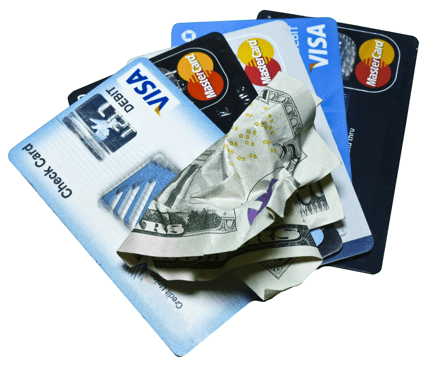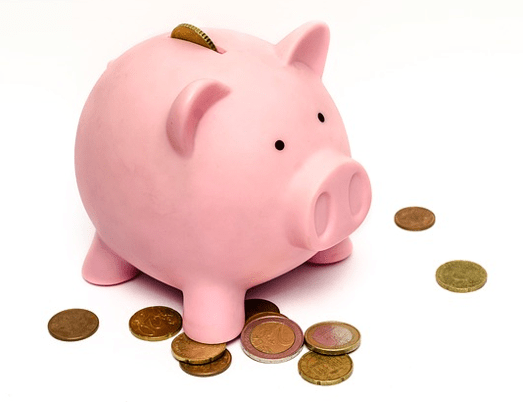Overview: Checking vs. Savings Accounts
When it comes to your hard-earned money, you want to make sure it is being taken care of well. Opening a new bank account will leave you with a decision: checking account vs. savings account. Which is best for you? And how are they different?
We have provided a detailed and easy-to-understand explanation of what checking vs. savings can offer you. By the end, you will know the benefits and also any potential downsides.
Checking vs. Savings Accounts: The Basics
Both checking and savings accounts are offered through local banks and credit unions. You are essentially allowing them to borrow your money for a time. In return, they keep it safe for you and even offer you some added benefits like interest or easy-to-use debit cards.
To ease your fears of an institution holding the money you worked hard to earn, there is good news. You can make sure the Federal Deposit Insurance Corp. (FDIC) insures your bank. If they do, the FDIC will insure each of your accounts up to $250,000 per person. This means the United States government backs your money.
If you choose a credit union instead, the National Credit Union Association (NCUA) will insure that $250,000 for you. The United States government also backs the NCUA. Checking vs. savings does not matter; in both situations, your money will be safe.
Though they share these similarities, there are quite a few differences in the checking account vs. saving account debate. Below we have a comprehensive breakdown.
See Also: What Is Social Security (Definition | See How Social Security Works)
Checking Accounts 101



Image Source: Pixabay.com
When looking at checking vs. savings, let’s start with the most commonly used account: checking accounts. Checking accounts are created for everyday, normal purchases. These often include activities like buying groceries, paying bills, pumping gas into your car, or going to the movies.
Here are the most common pros when it comes to choosing a checking account:
- Debit Card/Checkbook: When you are using a checking account vs. savings account, banks expect everyday use, so they offer easy and cashless ways to use your money. Typically, debit cards are accepted everywhere and pull the money straight from your checking account. Checkbooks are less popular these days, but often still available.
- Direct Deposit: Most banks will offer a direct deposit option attached to your checking account. This way, your employer can deposit your check immediately into your account without you needing to visit a bank. Banks often waive fees if you choose direct deposit.
- No Withdrawal Restrictions: Since it is assumed that you will use this account for all sorts of purchases throughout the month, checking accounts generally do not come with any withdrawal limitations.
- Proof: When you pay a bill with your checking account, you have a trail of payment proof. This is a safer option than simply paying in untraceable cash.
Of course there are also a few cons with using a checking account vs. savings account. These can include:
- Overdraft: When you use your debit card to buy something, it is possible to spend more than you have sitting in your checking account. When this happens, you overdraft. Most banks charge a substantial fee when this occurs. Fortunately, there are often overdraft protection options, so ask your bank about those.
- No/low interest: The money that sits in your checking account will most likely never earn interest. Even if you manage to find a rare, interest-earning checking account, the percentage will be extremely low.
Don’t Miss: What Is a Credit Union? What are Credit Unions & How Do They Work?
Savings Accounts 101



Image Source: Pixabay.com
Unlike checking accounts that are intended for quick and frequent access to your money, savings accounts have one purpose: to save. Savings accounts are intended for both emergency costs (hospital bills, a new roof, sudden airline tickets, etc.) and large purchases (a house, a car, a wedding, etc.).
According to MarketWatch, over 20% of Americans do not have a savings account. But choosing a saving vs. checking account comes with some great pros, including:
- Interest Earning: Since savings accounts are created for money to sit there a while, banks offer interest in return. Most interest rates are still quite small, but you can make money simply by not spending what is in your savings account. This is one of the biggest benefits of a savings vs. checking account.
- No Lost Value: Unlike many other investment options, savings accounts will not dip in value. The only options are to either maintain or gain.
- Inconvenience: In most cases, inconvenience would not count as a “pro,” but savings accounts are different. Since the whole point of using a savings account vs. checking account is to save your money, the lack of ease helps get that job done. Without a convenient debit card that allows you to swipe quickly, you will have to think longer and harder about any purchase.
There are a few cons of savings accounts that you should be aware of as well:
- Limited Transfers: The federal government actually regulates how many times you can transfer money from your savings account to your regular checking account per month. Ask your bank how they deal with savings transfers to ensure you do not get penalized with fees.
- Inconvenience: Yes, inconvenience made both the pros and the cons for saving accounts. While the lack of ease may help you save more money, it takes more effort once you are ready to use the money in your savings. You will typically either have to transfer the money to your checking account or visit a local branch to see your savings account money.
All-in-One Change Management Tools
Top Rated Toolkit for Change Managers.
Get Your Change Management Tool Today...
Checking vs. Savings Accounts: The Fees
The fees involved with these accounts are some of the biggest differences between the two. Fees are the most important features to pay attention to with these accounts.
A checking account vs. savings account will cost you more in fees. Since you are using all the features of a checking account more frequently than you would a savings account, you are charged more in return. Also, the bank does not typically get to keep your money for longer periods like they do with a savings account. This affects the fees too.
Typical checking account fees could include the following options. Of course, each bank is different, so ask the representative for a list of checking account fees:
- ATM charges
- Overdraft fees
- Overdraft protection fees
- Online bill pay fees (most are free)
- Paper statement fees (waived if you choose online statements)
- Check printing fees
A savings account, on the other hand, may have no fees at all. You use them less frequently, and the bank gets to use your money for longer. If it does have fees, they should be considerably lower than a checking account. Possible savings account fees include:
- Surpassing withdrawal limit fees
- Monthly fees (rare and typically waived by keeping a minimum balance)
Related: What Is Debt Consolidation? – Is It Good Or Bad? (Ways To Consolidate & Explanation)
Checking vs. Savings Accounts: The Requirements
Most checking and savings accounts require two main things:
- A minimum opening deposit
- A minimum balance requirement
The minimum opening deposit is the least amount of money you can have before opening your account. The minimum balance requirement is the minimum you can keep in the account to avoid the monthly fees.
When it comes to checking vs. savings, the minimums are similar. For example, Wells Fargo’s minimum opening deposit is $25 if you open a checking account by phone or online and $50 if you open it in a local branch. Likewise, opening a basic savings account only requires $25 as well.
However, Wells Fargo has a minimum balance requirement to avoid the $5 monthly fee. You must have a $300 minimum daily balance in order to waive the fee. Most banks and credit unions also offer premium savings accounts. The minimum balance requirement is often higher, but so are the interest rates.
Aside from the opening deposit requirement, banks typically require the following:
- Valid ID
- Current home address
- Social Security number



Children & Student Checking vs. Savings Accounts
Most large banks and credit unions offer special youth and student checking and savings accounts. Most of the time, they offer lower minimum opening deposit amounts and waive minimum balance requirements.
When it comes to children and student accounts, a checking account vs. savings account has few differences from a regular account. Both these accounts offer the flexibility young people need to manage their money now and learn how to manage larger sums of money in adulthood.
U.S. Bank, for example, offers kids savings accounts for children 17 and under. The minimum opening deposit is $25, but there is never a monthly fee. Chase Student offers high school students and college students checking accounts with access to ATMs. High school students have no fees, and college students have no fees for five years while in college.
Often, these children and student accounts must be opened along with a parent who belongs to that bank or credit union.



Image Source: Pexels.com
Popular Article: Online Banking Definition – Is It Safe & What Is Internet Banking? (Electronic & Internet Banking Definition & Review)
Banks vs. Credit Unions: What’s The Difference?
When it comes to opening checking or savings accounts, you may be unsure whether to use a bank or a credit union. The main difference between the two is that banks make a profit and credit unions are not-for-profit.
When you join a credit union, you become a member of that union. This entitles you to perks like higher interest rates, consumer loans, other financial perks, and a small “ownership” as a member.
When you join a bank, however, you become their customer. Stockholders own banks, not the customers.
When it comes to a savings vs. checking account, either account is safe in both banks and credit unions. However, you may slightly benefit from a credit union. You are likely to pay lower fees and gain higher interest payments.









Should You Have Both Bank Accounts?
Up until now, we have been separating checking vs. savings accounts. But it is important to remember that they actually work best when used simultaneously.
Since each account offers two unique but important sets of benefits, opening both accounts will aid you in being smarter with your money.
The checking account will make it easy to do all your everyday purchases. The savings accounts will make it easier to save money in case of an emergency or a future large purchase.
Checking vs. Savings Accounts: Making the Choice
When it comes time to open a savings account, a checking account, or both, the key is to pay attention. Take the time to consider your needs of a savings vs. checking account. Then do some comparison-shopping between banks or credit union branches to find the best policies that match your financial habits.
Do not forget to read all the fine print. While it may feel like a hassle to read the boring details of each account, remember that these are the accounts that will hold all of your hard-earned money. It is worth spending a little time reading.
Now that you understand the differences between checking vs. savings, you can begin your search for the perfect accounts for you and your family.
Read More: How The Stock Market Works: What You Should Know! (Definition & Help!)
AdvisoryHQ (AHQ) Disclaimer:
Reasonable efforts have been made by AdvisoryHQ to present accurate information, however all info is presented without warranty. Review AdvisoryHQ’s Terms for details. Also review each firm’s site for the most updated data, rates and info.
Note: Firms and products, including the one(s) reviewed above, may be AdvisoryHQ's affiliates. Click to view AdvisoryHQ's advertiser disclosures.



